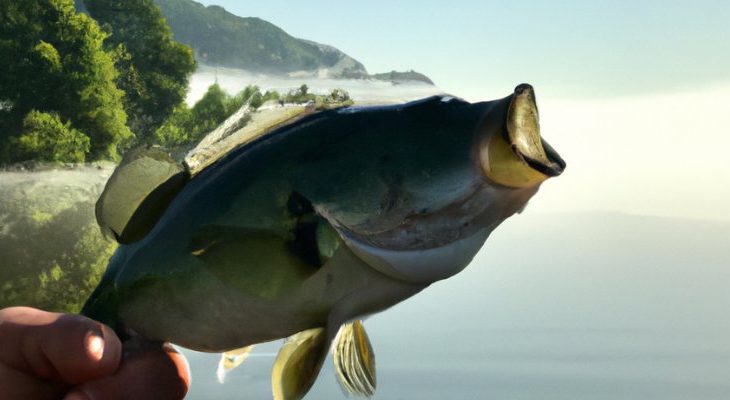Bass fishing is one of the most popular recreational activities in the United States. Whether you’re fishing for sport or for food, it’s a great way to enjoy the great outdoors and connect with nature. With so many different types of bass, it’s important to know the tips, techniques, and strategies that will help you catch more fish. That’s why we’ve created the Ultimate Guide to Bass Fishing, to help you become an expert angler and catch more fish than ever before.
Tips for Catching More Bass
Choose the Right Lures
When it comes to bass fishing, the right lure can make all the difference. Different types of lures work better in different types of water, so it’s important to choose the right one for your needs. Some popular options include jigs, worms, spinnerbaits, and crankbaits. Consider the type of water you’ll be fishing in, the time of day, and the type of fish you’re trying to catch when selecting your lure.
Know the Right Time of Day
Different types of bass are more active at different times of day. In general, bass are most active in the early morning and late evening, when the water is cooler and the light is lower. If you’re fishing during the middle of the day, consider using a slow, deep-diving crankbait to reach the fish where they’re hiding.
Pay Attention to the Weather
The weather can have a big impact on bass fishing, so it’s important to pay attention to the conditions when you’re on the water. Wind, rain, and temperature can all affect the behavior of the fish, so be prepared to adapt your fishing strategy accordingly.
Read the Water
Reading the water is a critical skill for any angler. Look for structures, such as weed beds, drop-offs, and underwater points, as these are likely spots where fish will be holding. Pay attention to the current, too, as fish will often be found in areas where the water is moving more slowly.
Techniques for Catching Bass
Jigging
Jigging is a versatile technique that can be used in a variety of situations. It’s especially effective in deep water, where you can drop the jig down to the bottom and jig it back up, imitating the movements of a live baitfish. Consider using a slow, steady retrieve when jigging, as this can be more effective than a fast, aggressive retrieve.
Drop-shotting
Drop-shotting is a finesse technique that’s ideal for clear water and wary fish. To drop-shot, tie a weight to the end of your line and attach a soft plastic bait above it. Cast the rig out and allow it to sink to the bottom. From there, you can shake the rod tip to make the bait quiver, enticing the fish to bite.
Crankbait Fishing
Crankbait fishing is a great option for covering a lot of water quickly. Choose a deep-diving crankbait for fishing in deeper water and a shallow-running crankbait for fishing in shallower water. Experiment with different retrieve speeds and techniques to see what the fish are biting on.
Strategies for Catching Bass
Focus on Structure
Structure is key when it comes to catching bass. Focus your fishing efforts on areas with weed beds, drop-offs, underwater points, and other types of structures, as these are likely to hold more fish. Consider using a sonar unit to help you locate structures and find fish-holding areas.
Fish During Key Times
Take advantage of the times when bass are most active, such as the early morning and late evening, to increase your chances of catching fish. Pay attention to the weather, too, as certain conditions, such as overcast days or low-light conditions, can also trigger feeding activity.
Experiment with Different Techniques
Don’t be afraid to try out different fishing techniques, such as jigging, drop-shotting, or crankbait fishing. Experiment with different lures retrieve speeds, and pay attention to how the fish are reacting. This will help you determine what’s working best and give you a better chance of catching more fish.
Be Patient
Finally, be patient. Bass fishing can be a slow, methodical process, and it may take time to find the right technique or the right spot. Stay focused and keep trying different approaches, and you’ll eventually find success.
FAQs:
What are some good lures for bass fishing?
Some popular options for bass fishing include jigs, worms, spinnerbaits, and crankbaits. Choose a lure that’s suitable for the type of water you’ll be fishing in and the type of fish you’re trying to catch.
What’s the best time of day to go bass fishing?
Bass is most active in the early morning and late evening when the water is cooler and the light is lower. However, the best time of day for bass fishing will depend on the conditions and the behavior of the fish.
How do I find fish-holding areas when bass fishing?
Focus on areas with structure, such as weed beds, drop-offs, and underwater points. Consider using a sonar unit to help you locate these areas and find fish. Pay attention to the current, too, as fish will often be found in areas where the water is moving more slowly.
Conclusion:
Bass fishing can be a fun and rewarding hobby, and with the right tips, techniques, and strategies, you can become an expert angler and catch more fish than ever before. Remember to choose the right lure, fish during key times, experiment with different techniques, and be patient, and you’ll be on your way to success. With this Ultimate Guide to Bass Fishing, you now have all the tools you need to take your fishing game to the next level. Happy fishing!
References:
“Bass Fishing Basics.” Bass Fishing, www.bassfishing.org
“Bass Fishing Tips for Beginners.” Outdoor Life, www.outdoorlife.com
“Bass Fishing Techniques.” BassResource, www.bassresource.com
“Bass Fishing: Tips, Techniques, and Strategies.” National Geographic, www.nationalgeographic.com
“How to Fish for Bass.” Bass Fishing Tips and Techniques, www.bassfishingtipsandtechniques.com





